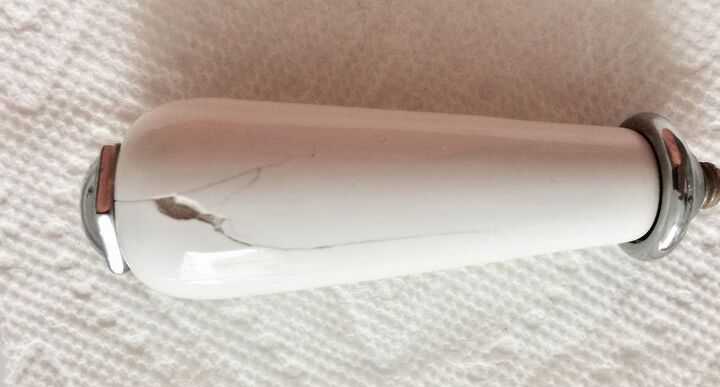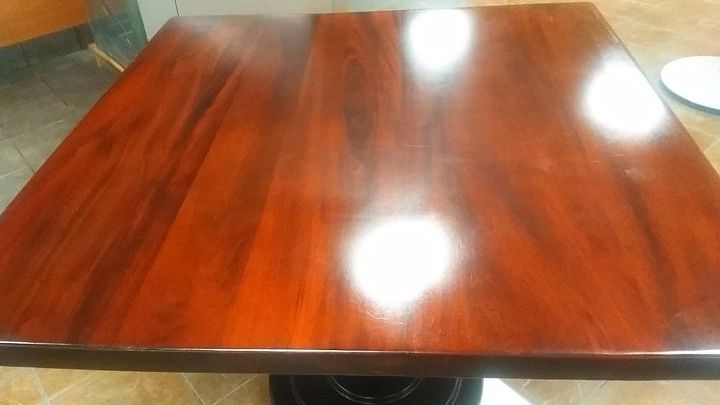How do you fix cracks in the coating of a table?
Related Discussions
How to get rid of mice?
We seem to have some unwelcome Mickeys and Minnies in our house. What is the best way to get rid of them?
How to remove popcorn ceiling with asbestos?
I want to remove my popcorn ceiling, but it has asbestos in it. How do I go about this safely?
How to caulk baseboard gaps?
How do I fill gaps at baseboard, should I caulk? If so, does anyone know how to caulk baseboards?
How to fix squeaky hardwood floors?
How do I fix squeaky hardwood floors?
How do you fix a porcelain crack in tub handles?
Help! I am desparate to fix a crack in one of the porcelain lever hadles of the bath faucet. The fix has to be impervious to water, strong and not prone to changing ... See more
How can I remove these water marks from wood tables?
My husband bought these tables and a few of them are in good condition while some have like water marks on them (not sure though). I would like to know what could I ... See more






Some of the most beautiful tables made are with a resin table top. Resin is an epoxy polymer that can be poured in liquid form over objects and has the ability to fossilize things. This preservation permits onlookers to have a view of the objects caught in the resin. The most decorative tables these days are resin made with pretty objects inside. The tabletops can sometimes get cracked or chipped or the surface might grow dull after a while. In such cases, the best bet is to make more epoxy polymer and pour it on top of the table to leave a final layer, which not only protects but also strengthens the resin base. ***** Step1: Placing Cloth for Frame..... The type of canvas cloth used should be very thick. The cloth should be placed carefully below the tabletop. This is to avoid spills, making the procedure less messy. No other material should be used to repair the tabletop but the described thick canvas cloth. Epoxy has the ability to dissolve plastic, so special caution should be used in not using any polymer product..... Step 2: Raising the Edges ..... In order for the epoxy to be poured on the top, the table should have raised edges. These edges can be made of metal bindings. There are also soft metal stripping available in the market. This can be attached to the sides of the table so that there’s a trough created to keep the epoxy standing in one place. This helps the liquid to dry out before it can pour and spill. In order to make the borders more liquid resistant, it is wise to seal the boundaries with varnish or such material. These seal off the crevices left by gaps..... Step 3: Mixing the Resin..... The epoxy resin should be mixed in the bucket with the help of a mixing rod. This has to be kept thin to bring fineness to the resulting product. Epoxy pouring for resin tabletops should always be done in steps. The first layer of resin should be poured on the tabletop and left to dry. This way, repeated layers of resin are poured one after the other. Ample time needs to be given to the resin to harden...... Step 4: Settling the Bubbles Formed on the Surface..... The surface should be blown with a drier. This will make bubbles on the surface, if any, burst. The epoxy takes at least two weeks to dry out and harden. The best way is to let it cure with as much time as it requires.
Hi William, Thank you for your response. I have done quite a few tables in this before. My question is if there is a way to repair very fine spider cracks that go through the entire finish (approx 1/8" -3/16 thick finish) from the wood up through the finish to the surface.
A re-pour wouldn't repair these. They are like a crack through glass.
Was thinking maybe a heat gun or something else someone has had success with.
Thank you very much
Embrace the cracks.All I would do is seal it with liquid plastic.That is what the trade calls distressing.It is a very expensive treatment!
I Would but it is for a client.
Thank you :))
I am having the same issue with a very costly burl table top. Have you founmd out what we can do to fix this...or how to remove the material to refinish?